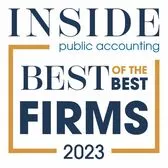Key Takeaways
The new rules will challenge nonprofits to become increasingly transparent about their financial performance and condition.
- The new rules will challenge nonprofits to become increasingly transparent about their financial performance and condition.
- The new rules will result in streamlined, consistent and transparent reporting among nonprofit organizations. This will allow organizations to better share their stories—both financially and operationally. Additionally, the new rules will press organizations to provide insights into their programs and supportive services.
- The key provisions of the new standards include:
- Simplified net asset classes
- Updates to the presentation of investment returns, functional expense reporting, and cash flows from operating activities using the direct method, and
- The addition of liquidity and available resource information.
As many of you may remember, last summer the Financial Accounting Standards Board (FASB) issued Phase 1 of new guidance on financial reporting requirements for nonprofit organizations – ASU 2016 -14, Presentation of Financial Statements of Not-for Profit Entities. This project began taking shape after FASB formed its Not-for-Profit Advisory Committee (NAC) back in 2009, partially in response to practitioners’ frustration with the lack of fungibility and the amount of restricted money in many of the nonprofit organization revenue streams. The new standards, which are effective for annual financial statements beginning after December 15, 2017, and for interim periods within the fiscal year beginning after December 15, 2018, will challenge nonprofit organizations to present their financial statements in a more conventional and transparent way. As a result, donors, grantors, creditors, and other financial statement users and stakeholders should find it easier to assess a nonprofit’s resources and the changes to its resources.
Many experts believe the new guidelines will also provide more clarity within nonprofit organizations for those who must sift through financials for management and governance purposes. “While the current not-for-profit financial reporting model held up well for more than 20 years, stakeholders expressed concerns about the complexity, insufficient transparency, and limited usefulness of certain aspects of the model,” observed FASB Chair Russell Golden, when the new guidance was issued on August 18 of last year. Golden added at the time that the new guidance would simplify and improve “the face of the financial statements” and enhance the disclosures in the notes. As a result, nonprofit organizations should be better able to communicate their financial performance and condition to their stakeholders.
A wide variety of non-profit organizations will be affected by the new FASB rules including public charities, foundations, colleges, universities, health care providers, religious organizations, trade associations and cultural institutions, among others. The key provisions of the new standards include:
- Simplified net asset classes,
- Updates to the presentation of investment returns, functional expense, and cash flows from operating activities, and
- The addition of liquidity and available resource information.
Again, the standards are effective for annual financial statements beginning after December 15, 2017, and for interim periods within the fiscal year beginning after December 15, 2018. For some of the new provisions, organizations can implement certain changes during current year reporting without triggering early adoption. This phased approach may be preferable to ease the burden of transition and will allow the nonprofit organization some flexibility in determining the best presentation for their financial statement users.
The full standard is 270 pages (view it here), but here are some important highlights of the standard that you should be aware of:
- Net asset classification and disclosures will be simplified. Net assets classes will be limited to two classes (down from three) when the new standard is implemented and will include net assets with donor restrictions and net assets without donor restrictions. Further,
- For endowments that are valued at less than the original gift amount (Underwater Endowments), the asset will be classified within net assets with donor restrictions. Disclosures pertaining to Underwater Endowments must include the original amount of the gift and the organization’s policy about how the funds are to be spent.
- Enhanced disclosures for board-designated net assets without donor restrictions will be required and will address the amounts and purpose of any board designations or appropriations resulting in self-imposed limits on the use of net assets without donor restrictions.
- Organizations will still be required to report changes in total net assets for the period, but now they must report for each of the two classes of net assets in the statement of activities. For many organizations, this will represent a streamlined presentation on the face of the statement of activities.
- Investment return is required to be presented net of all related external and direct internal expenses on the statement of activities. The current requirement to disclose the amount of netted expenses is eliminated.
- Nonprofit organizations will be required to report expenses, either on the face of financial statements or in the notes, by function and natural classification. In addition, disclosures about specific methodologies used to allocate costs among program and support functions will be required.
- Organizations will continue to have a choice in the presentation of cash flow information best suited to their users - either the indirect or direct method may be used. However, the indirect reconciliation will no longer be required when using the direct method.
- Quantitative and qualitative information about the organization’s liquidity will be required, including an explanation of how an organization will manage its liquidity risk in the coming year. This allows the organization to expand information about upcoming general expenditures and to outline resources available to meet operational needs.
The new standard represents a step in the right direction to ensure user-friendly and transparent financial statement reporting among nonprofit organizations. There is a real opportunity here for nonprofit organizations to increase user understanding of their operations both on the face of the financial statements as well as through enhanced disclosure.
NOTE: If your organization wants to implement the new standard for the calendar year 2017, you can do so for many of the provisions and take 2017 as a “mock period.” Organizations are also able to early adopt the full standard, which requires a full retrospective approach, although the standard does allow for certain omissions of comparative information (such as with the functional expense schedule and required liquidity information).
For public practitioners, this implementation may seem daunting to your clients, so take this opportunity to work with management to put a plan in place focusing on the following aspects of the new standard:
- It’s an update, not an overhaul. The goal is to improve how nonprofit organizations communicate their financial performance and condition.
- Reporting will be improved. Whether through streamlined net asset classification or inclusion of functional expenses detail, financial statements will be more transparent and meaningful for the users. The focus will be on enhanced disclosure to provide information on net asset restrictions, liquidity, and key organizational policies.
Conclusion
In light of the significant reporting and disclosure changes involved, preparers and auditors who work with—or within—nonprofit organizations should start preparing for these changes now. Some of the new disclosures, such as those regarding liquidity and availability, may involve a learning curve for managers, board members, lenders and others who rely on the financial statements. Other disclosures, such as the required disclosure of board designations on net assets, may require nonprofit organizations to adopt new policies and practices. The FASB has planned for a Phase II, which will address a variety of other issues affecting nonprofit organizations; however, the new guidance is not expected for quite some time.
If you or a professional colleague is concerned about the impact of the new FASB rules on nonprofit organizations, please don’t hesitate to contact us today.
About the Authors
Morris Zlotowitz is an audit partner based in HCVT’s West Los Angeles, CA office. Morris has over 25 years of experience providing audit and accounting services to private companies and nonprofit organizations, including private foundations, public charities, and other exempt organizations. Morris.Zlotowitz@hcvt.com, 310.566.1933
Kimberly Hastings is an audit principal based in HCVT’s Encino, CA office. Kim has more than a decade of experience providing audit services to clients in the nonprofit, real estate, and affordable housing industry sectors. Kimberly has extensive knowledge performing audits of nonprofit organizations funded with federal grants that must comply with Uniform Guidance requirements and with affordable housing projects with tax credit incentives and HUD financing. Kimberly.Hastings@hcvt.com, 818.849.3144
Arcy Olguin is an audit principal based in HCVT’s Pasadena, CA office. Arcy has over 17 years of experience providing audit services to clients in the nonprofit, real estate and affordable housing industry sectors. Arcy has extensive knowledge in performing audits of nonprofit organizations, including those funded with federal grants that must comply with the Uniform Guidance requirements. Arcy specializes in auditing affordable housing projects financed with tax credits and tax-exempt bonds, including those subject to HUD audit requirements. Arcy.Olguin@hcvt.com, 626.463.7200
About HCVT
Founded in 1991, HCVT is one of the fastest-growing CPA firms in the nation. The firm provides provide tax, accounting, business management and mergers & acquisition services to private companies, closely-held businesses, public companies and high net worth individuals and family offices. The firm’s over 500 members, including over 100 partners and principals, work from eight offices in Southern California with additional offices in Walnut Creek, California, Fort Worth, Texas and Park City, Utah.




